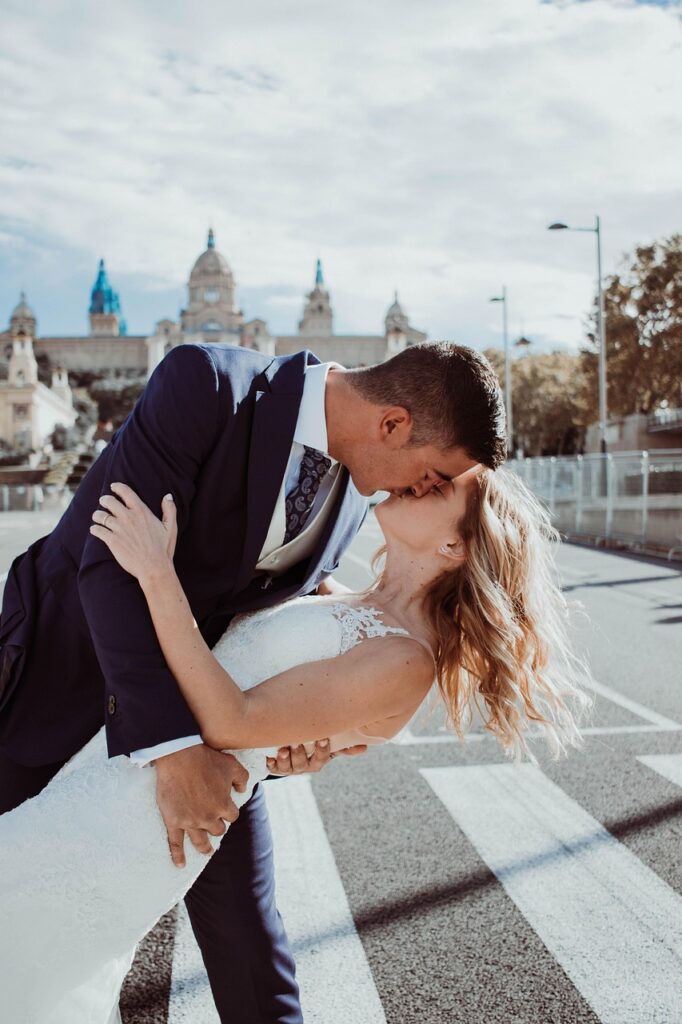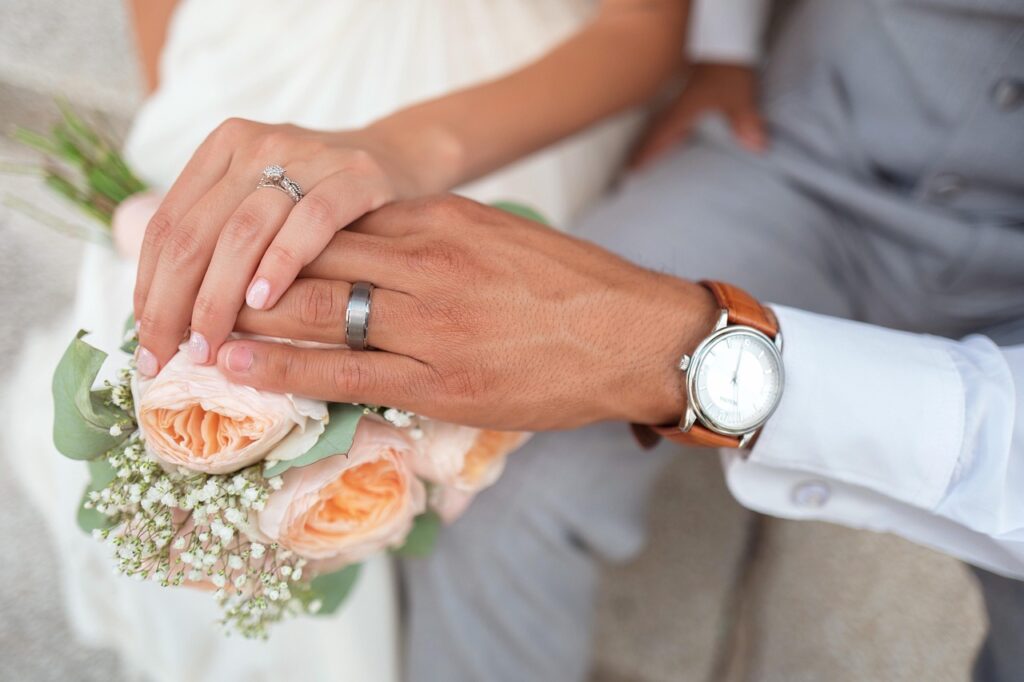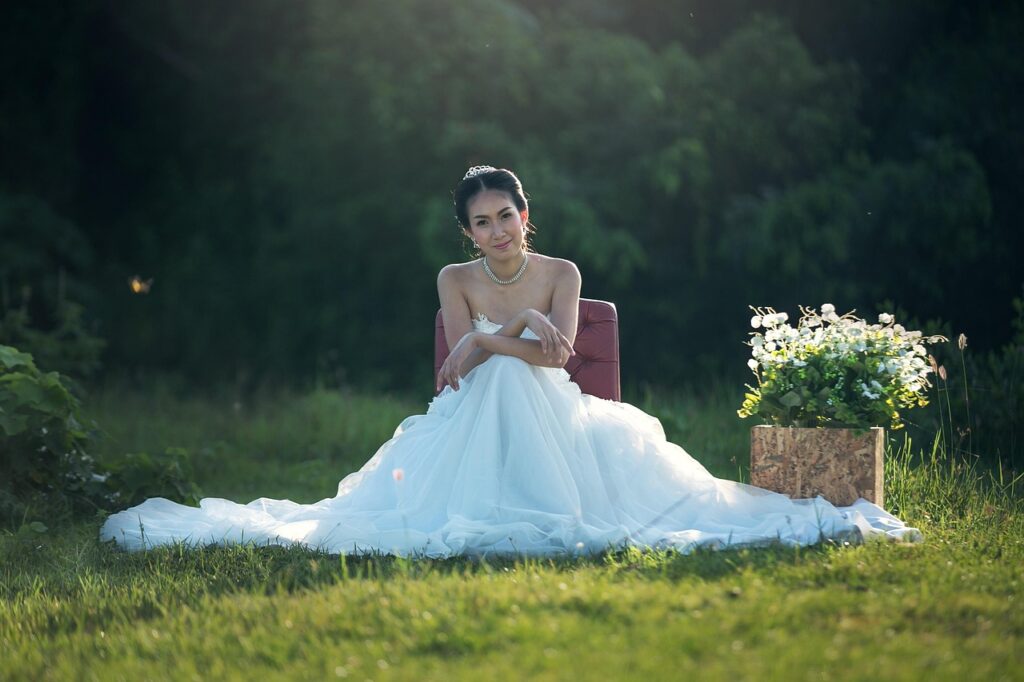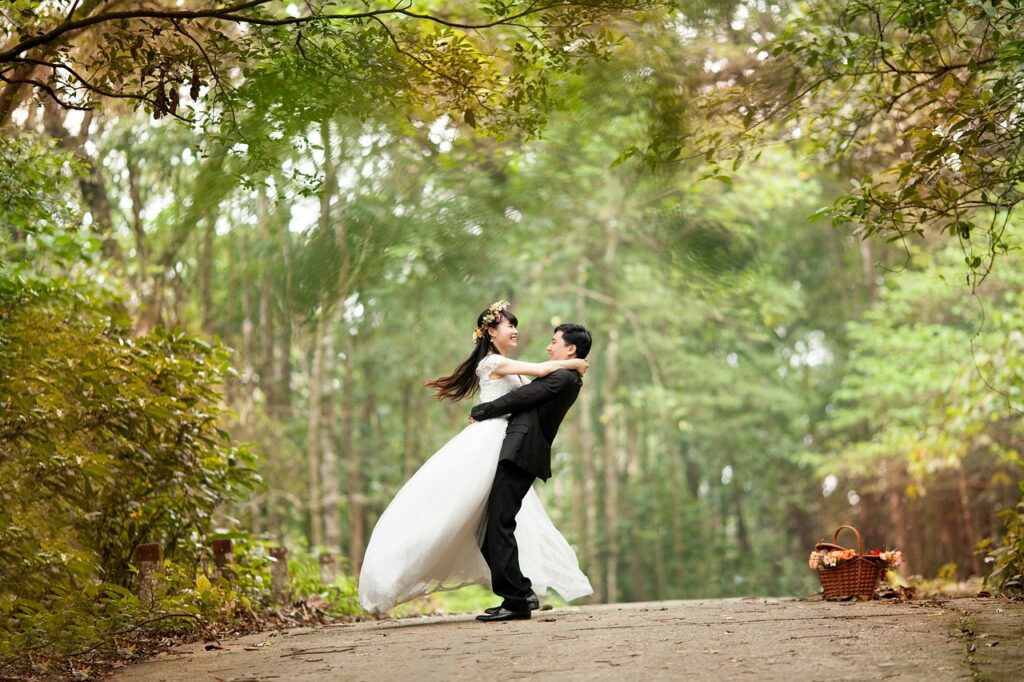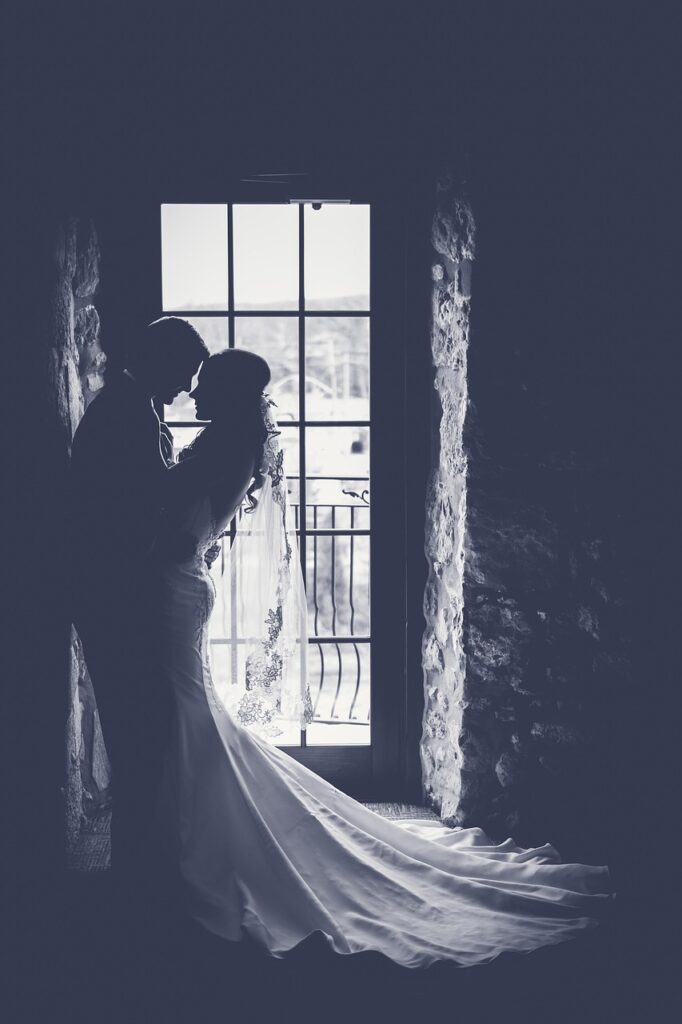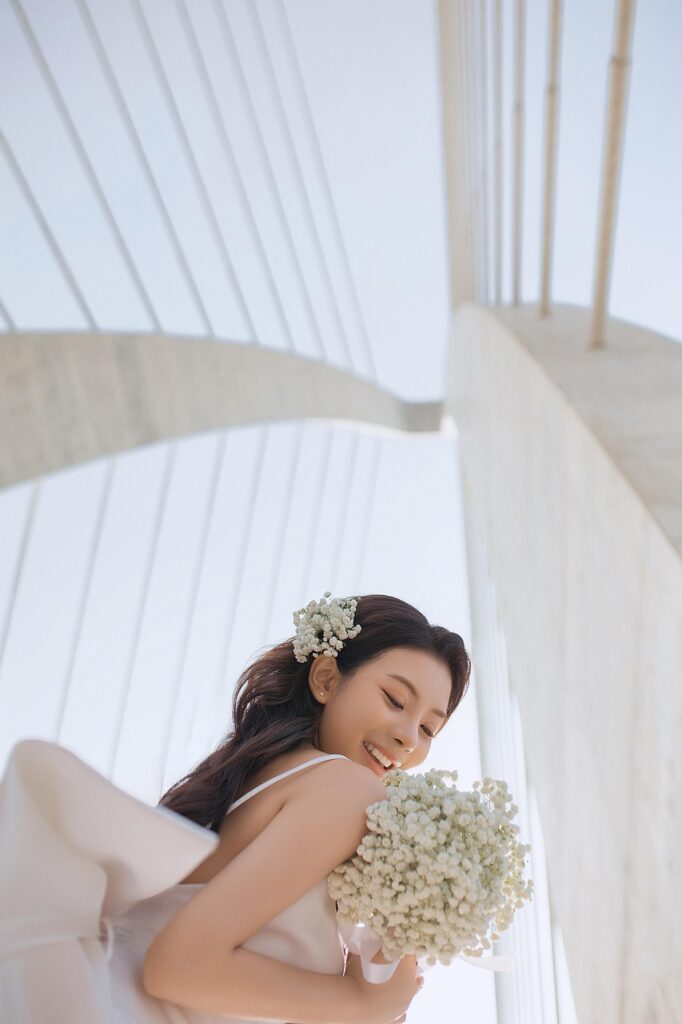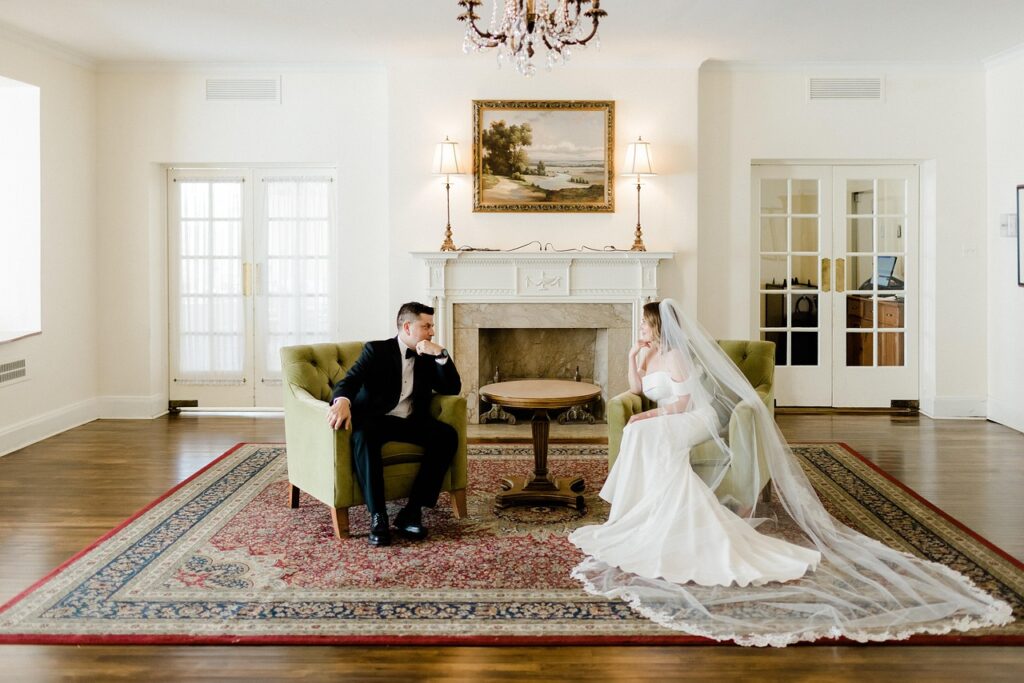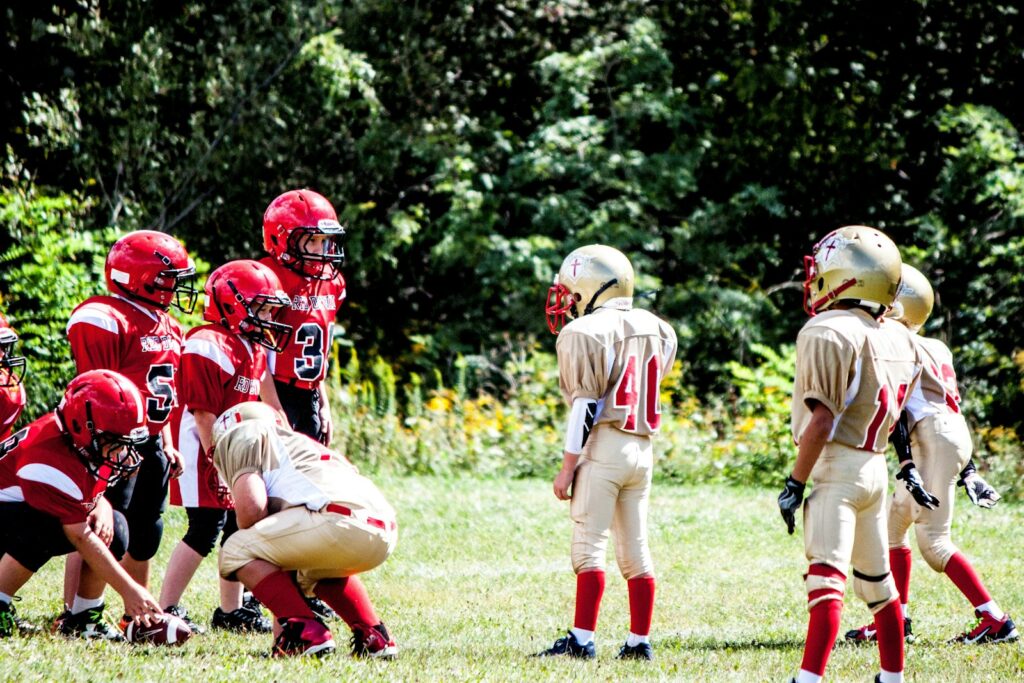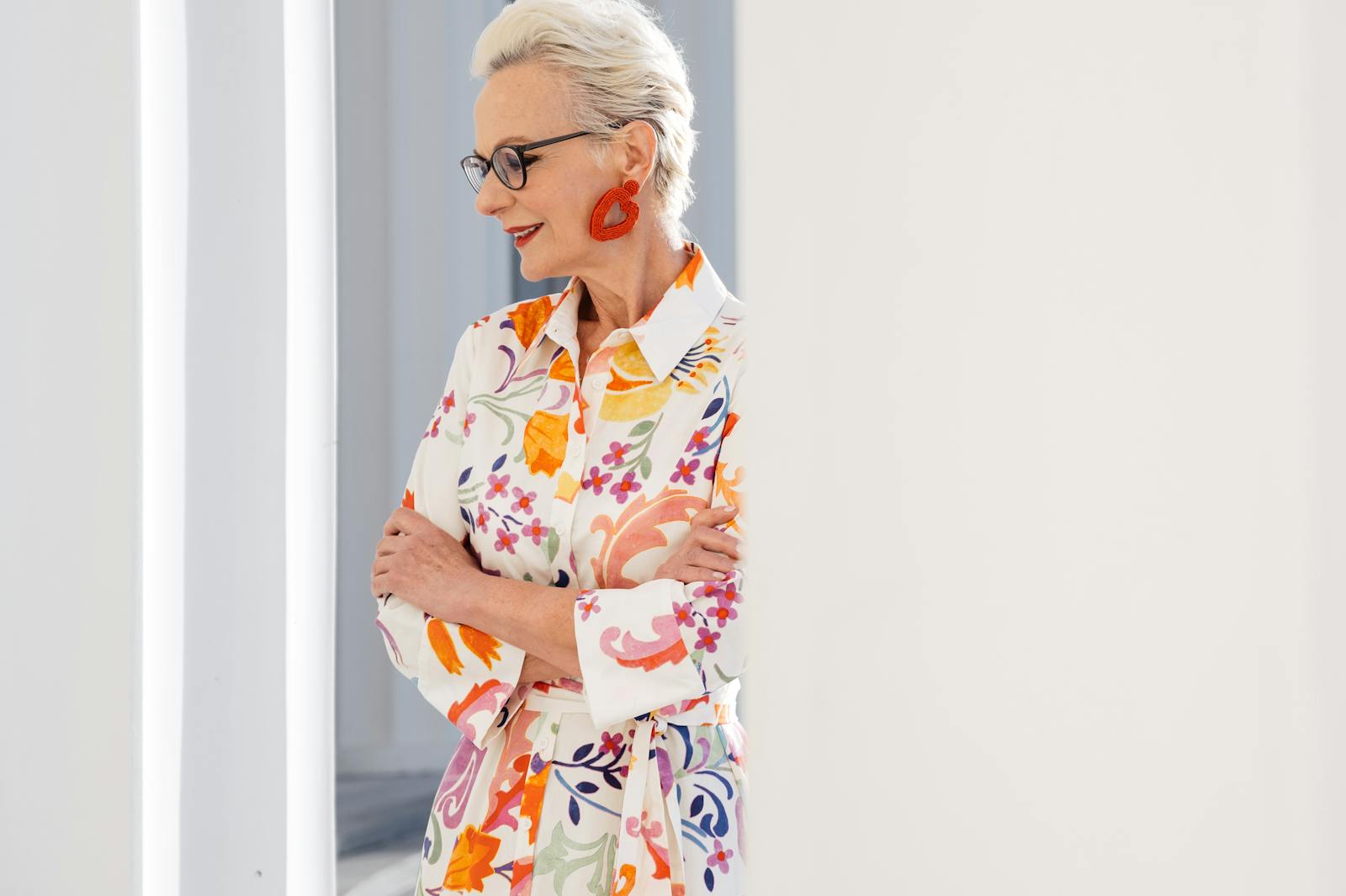Modern weddings are looking a whole lot different these days, and honestly, we’re here for it! The days of rigid, stuffy traditions are gracefully taking a backseat, making way for celebrations that truly resonate with today’s unique love stories. Couples are increasingly trading long-standing customs and excessive spending for events that feel both in tune with the times and deeply meaningful to them. It’s all about personal style, individuality, and creating a day that’s a genuine reflection of who you are as a couple.
Gone are the days when a wedding was a checklist of “shoulds” and “must-dos” dictated by centuries-old rules. Etiquette experts and wedding professionals are confirming what many modern couples already feel: customs once seen as essential have officially become optional. From who foots the bill to what the wedding party wears, and even where the vows are exchanged, the landscape of marital celebrations is undergoing an exciting transformation.
So, get ready to say goodbye to the outdated and hello to the authentic! We’ve connected with a bunch of wedding professionals and experts to uncover which “rules” were truly meant to be broken and why modern couples are happily ditching them. Let’s dive into some of the wedding traditions that are officially on their way out in 2025, paving the way for more personal, joyful, and stress-free celebrations.
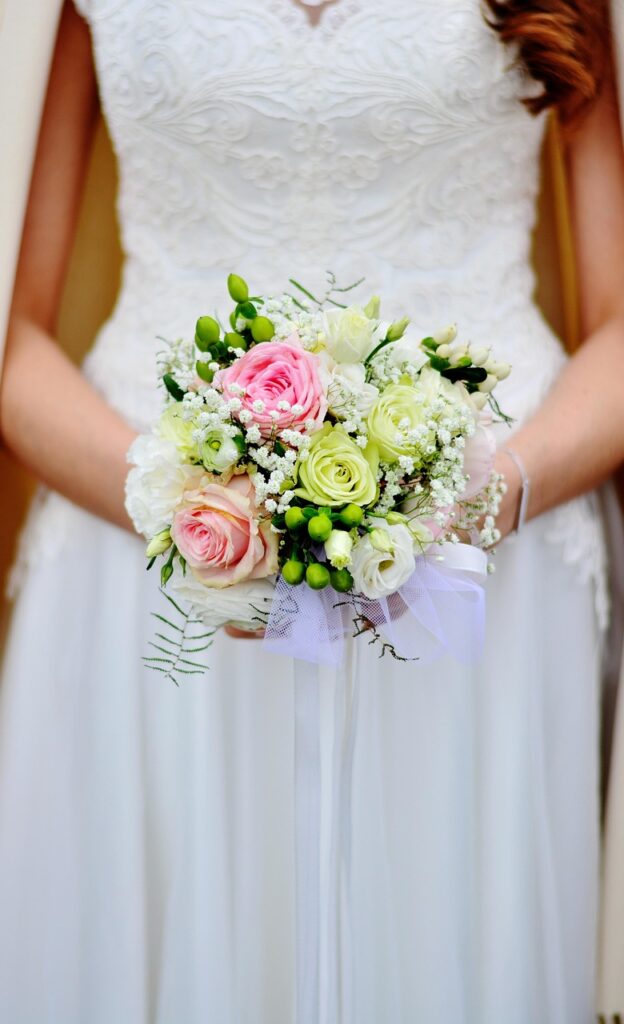
1. **You Need to Get Married in a House of Worship**For centuries, religious ceremonies held in a house of worship were one of the most common and expected wedding traditions. It was the default setting for nearly every “I do,” deeply rooted in societal and spiritual norms. Couples simply followed suit, often without questioning if it truly aligned with their personal beliefs or desired aesthetic for their big day. The church, synagogue, or temple was the central stage for a couple’s union.
However, times are changing, and couples these days are increasingly choosing to do away with the religious ceremony mandate. The focus has shifted dramatically towards creating an atmosphere that is personal and reflective of their own journey, rather than adhering to a predefined spiritual setting. This isn’t to say faith isn’t important to many, but the venue no longer has to be a consecrated building.
Katie Elder, owner of Overlook Barn, a wedding venue in North Carolina, notes this significant trend. She shares that while some couples still opt for a church ceremony followed by a reception at her venue, “by far, the majority are skipping the church ceremony altogether and opting for a beautiful outdoor ceremony or a ceremony in one of our barns.” This speaks volumes about the desire for unique, picturesque backdrops that feel less formal and more in line with a couple’s vision.
The allure of natural settings—beaches, vineyards, mountainsides, or charming rustic barns—is undeniable for many. These locations offer a blank canvas for personalization, allowing couples to infuse their ceremony with an intimacy and beauty that a traditional house of worship might not offer. It’s about crafting an experience that feels authentic to them, celebrating their love amidst scenery they adore, rather than following a centuries-old script.
Read more about: Understanding the Shepherd’s Heart: An In-Depth Look at the Multifaceted Role of a Pastor in the Modern Era
2. **Your Wedding Party Has to Be All Women or All Men**The classic image of a bridal party typically involved the bride surrounded by her female bridesmaids and the groom flanked by his male groomsmen. This strictly gender-divided lineup was a staple of wedding etiquette for generations, setting clear roles and expectations for who stood on which side of the aisle. It was a tradition deeply embedded in social norms, defining who could support the bride and groom based purely on gender.
But here’s a refreshing update: today’s brides and grooms are confidently redefining gender norms, placing a much greater emphasis on gender inclusivity and genuine friendship. The idea that a groom must only have groomsmen, or a bride only bridesmaids, is swiftly becoming a thing of the past. Modern couples are recognizing that true support transcends traditional gender binaries.
Kristin Watkins, owner and lead planner at Stephanie Rose Events, wholeheartedly confirms this shift, stating, “It is perfectly acceptable to have either gender as bridesmaids and groomsmen.” This simple statement reflects a profound change, allowing couples to choose their closest confidantes, regardless of how they identify. Watkins even adds, “We have started using the term entourage to describe the wedding party,” embracing a more fluid and inclusive term.
This evolution means we’re seeing more “bridesmen” and “groomsmaids” stepping up to support their friends on their special day. As etiquette expert Nick Leighton puts it, “anyone can have any role at a wedding, regardless of gender.” This allows for a wedding party that truly represents the couple’s most cherished relationships, celebrating loyalty and love over outdated conventions. It’s a win for authenticity and inclusivity, ensuring everyone feels truly seen and valued.
As Thomas P. Farley, also known as Mister Manners, humorously points out, if a movie like ‘My Best Friend’s Wedding’ were filmed today, the dynamics would likely be very different, with Julia Roberts’ character potentially being an attendant for the groom. He emphasizes the absurdity of “scrounging for attendants of the same gender when you have one or more super-close friends of the opposite gender,” celebrating this shift as a “gratefully, no longer a societally expected norm.”
Read more about: The Royal Radiance: An Exclusive Look at 14 Enthralling Necklaces That Define Regal Style and History

3. **You Need to Mail Printed Invitations and RSVP Cards**For decades, the physical wedding invitation was an indispensable part of wedding planning. Elaborate stationery, perfectly penned addresses, and a separate RSVP card to be mailed back were the gold standard. Receiving a thick, embossed envelope in the mail signaled the official start of wedding festivities, and for many, it was a cherished keepsake, a tangible piece of their upcoming celebration. It was a formal, expected step in the wedding journey.
However, in our increasingly digital world, printed invites and physical RSVP cards are now considered passé by many. Wedding invitation etiquette has officially embraced the digital age, offering couples a more modern and efficient way to communicate with their guests. This shift is not just about convenience; it also aligns with a tech-savvy generation’s desire for efficiency and environmental consciousness.
Kristin Watkins highlights this growing trend: “More couples are moving to email and digital invitations.” While emailing information was once common primarily for couples with international guests to avoid mailing hassles, she notes that “now it is acceptable for all weddings.” This broad acceptance reflects a significant cultural shift towards digital communication in all aspects of life, including major life events.
The benefits of going digital are compelling for both the couple and their guests. Couples appreciate that “responses are easier to track,” streamlining the arduous process of guest list management. Beyond convenience, emailing invitations “saves on costs,” which is a considerable advantage for budget-conscious pairs. Guests, on the other hand, enjoy the simplicity of being able to “respond by clicking a link rather than mailing back a response card,” making the whole process much smoother.
This farewell to the outdated wedding rule of mandatory printed invites is truly a win-win situation. While physical invitations aren’t completely disappearing and can still be a luxury or keepsake, their necessity has diminished. Digital platforms, wedding websites, and save-the-date emails are gaining popularity, offering a practical, cost-effective, and eco-friendly alternative that resonates deeply with modern couples.
4. **The Bride’s Parents Pay for the Wedding**The tradition of the bride’s parents footing the entire bill for the wedding is deeply ingrained in history, stemming from ancient dowry customs. Historically, the bride’s family would transfer property or money to the groom or his family upon marriage, making the wedding expenses a natural extension of this arrangement. It was a well-understood, if not always easy, societal expectation that the bride’s family would bear the financial burden of the celebration.
However, this once-entrenched custom is rapidly evolving, giving way to a more modern and equitable approach to wedding finances. The “couple-funded wedding movement” isn’t just gaining momentum; it’s practically becoming the new norm. Sarah Bradshaw, an experienced wedding and engagement photographer, observes this firsthand: “Most of my couples pay for part or all of their wedding themselves, including the rehearsal dinner.”
This shift reflects a significant change in how couples approach marriage and financial independence. Many brides and grooms are establishing their lives and careers independently before tying the knot, often living together for years. They are more financially stable and desire to have direct control over their wedding budget and decisions. When parents do contribute, it’s usually for “specific things,” rather than taking on the entire cost, allowing for a shared responsibility.
According to a 2022 survey from The Knot, couples, on average, now pay for 49% of their wedding costs themselves, with families covering the remainder. This percentage is even higher for LGBTQ+ couples and Gen Xers, highlighting a broader societal move towards self-reliance. Etiquette expert Nick Leighton confirms this, stating, “These days, the people getting married are more likely to be footing most — if not all — of the bill for the event.”
This means couples are actively finding creative ways to manage and keep their wedding budget in check, making choices that truly reflect their priorities and financial capabilities. It’s a move away from an outdated financial obligation and towards a collaborative effort, empowering couples to craft their dream day without feeling constrained by traditional payment structures.
Read more about: When Wedding Funds Get Tricky: Navigating Family Expectations and Financial Conversations with Grace
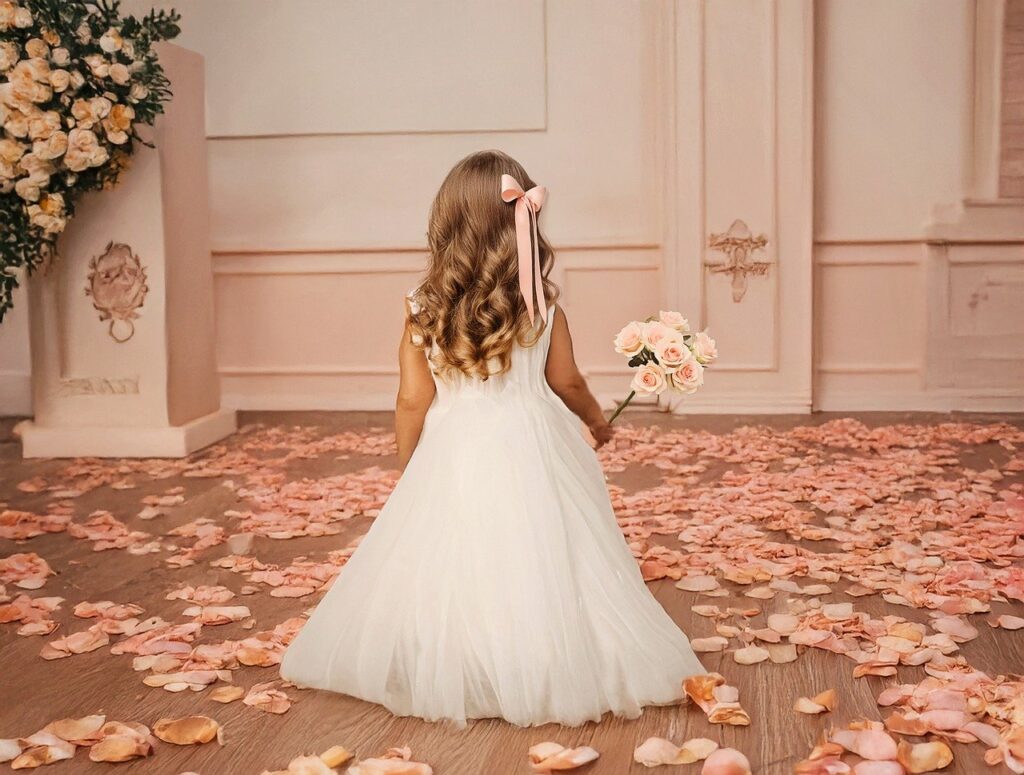
5. **Bridesmaids’ Dresses Should Be Identical**When we conjure images of bridesmaids from decades past, a uniform vision often comes to mind: a line of women adorned in the exact same dress, in a solid, often uninspiring, color. This tradition was once a cornerstone of wedding aesthetics, believed to create a cohesive look and, in ancient times, even to confuse evil spirits or marauders who might target the bride. The sameness of their outfits was thought to act as a protective camouflage.
Thankfully for bridesmaids everywhere, this outdated wedding rule is officially on its way out. Modern couples are embracing personalization and individuality, moving away from the “one-size-fits-all” approach to bridal party attire. As Lindsey Nickel, a wedding planner at Lovely Day Events, notes, “All the bridesmaids wearing the identical, solid color dress is less common as couples opt for more personal wedding party attire.”
This trend is one of Nickel’s favorites because it allows people to “pick a dress that flatters their figure and that they would realistically wear again.” The focus has shifted from strict uniformity to creating a beautiful, cohesive look that also feels inclusive and comfortable for everyone involved. Brides are empowering their friends to feel confident and genuinely themselves on the big day, rather than forcing them into an uncomfortable or unflattering garment.
The new approach often involves coordinating a color palette, a specific fabric, or a general style, while allowing bridesmaids to choose their own dress cut and design. This results in a much more dynamic and visually appealing bridal party, with each individual’s personality shining through. As etiquette expert Thomas P. Farley explains, “Coordinating color may instead be the plan — or coordinating hemlines or fabrics,” adding that “alternatively, attendants may be instructed to wear whatever makes them happiest. Creativity and freedom now reign.”
This evolution speaks to a broader desire among modern couples to make their wedding truly their own, personalizing every detail. It’s a refreshing twist that prioritizes comfort, aesthetics, and the genuine happiness of those closest to them, ensuring that the wedding party feels celebrated and comfortable, rather than just part of a traditional tableau.
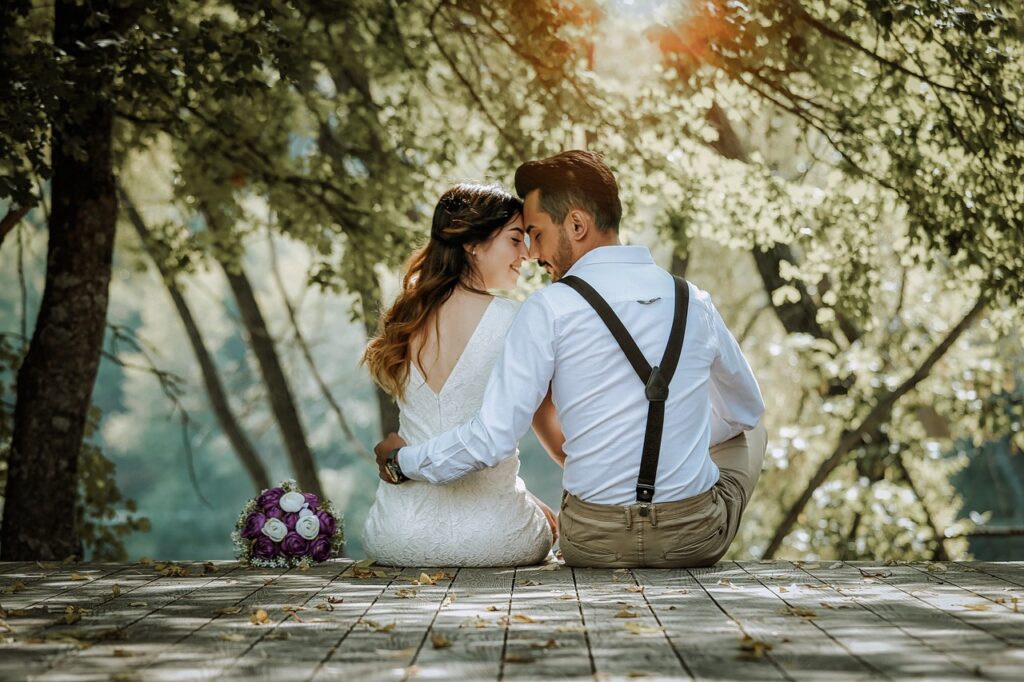
6. **Guests Choose Their Seats Based on Their Relationship to the Couple**Traditional wedding ceremonies often featured a clear, unspoken rule: guests from the bride’s side were expected to sit on the left side of the aisle, and those from the groom’s side on the right. This demarcation was a time-honored custom, physically symbolizing the joining of two distinct families while keeping their respective guests segregated. It was a visual representation of the pre-union status, setting a formal tone for the ceremony.
However, in 2025, couples are happily saying goodbye to these separated ceremony layouts. The classic “bride vs. groom seating” is fading, replaced by a much more inclusive and relaxed experience for everyone involved. Wedding and event planner Ashley Gelfound confirms this shift: “Guests used to be required to sit on the left side of the aisle if they were from the bride’s side and on the right side of the aisle if they were on the groom’s side.”
Gelfound then clarifies the modern approach: “However, nowadays, the wedding couple does not uphold this tradition. Instead, guests sit wherever they feel comfortable, and the bride’s side and groom’s side intermingle.” This subtle but significant change acknowledges that weddings are fundamentally about bringing two families and groups of friends together, not keeping them apart. Why split them when the whole point is unity and celebration?
This “choose your own seat” approach creates a warmer, more welcoming atmosphere right from the start. It’s particularly thoughtful for guests who might be close to both the bride and groom, freeing them from the awkward dilemma of choosing a side. By encouraging intermingling, couples foster a sense of community and connection among their loved ones, promoting the very essence of what a wedding signifies: the creation of a new, larger family.
Embracing this more relaxed seating arrangement allows for a seamless flow of interaction, encouraging guests to meet and converse with people from both sides. It sets a precedent for a joyful celebration where everyone is united in their happiness for the couple, rather than being confined to traditional allegiances. It’s a simple yet powerful way to make the wedding feel more personal, inclusive, and reflective of the modern family dynamic.
Okay, folks, we’ve already covered some seriously outdated wedding norms, but trust us, there’s more where that came from! Modern lovebirds are absolutely crushing it when it comes to crafting celebrations that truly speak to their hearts, not just old rulebooks. So, let’s dive into six more traditions that are gracefully bowing out, making room for even more authenticity, joy, and a whole lot less stress on your big day. Get ready to rethink everything you thought you knew about weddings!
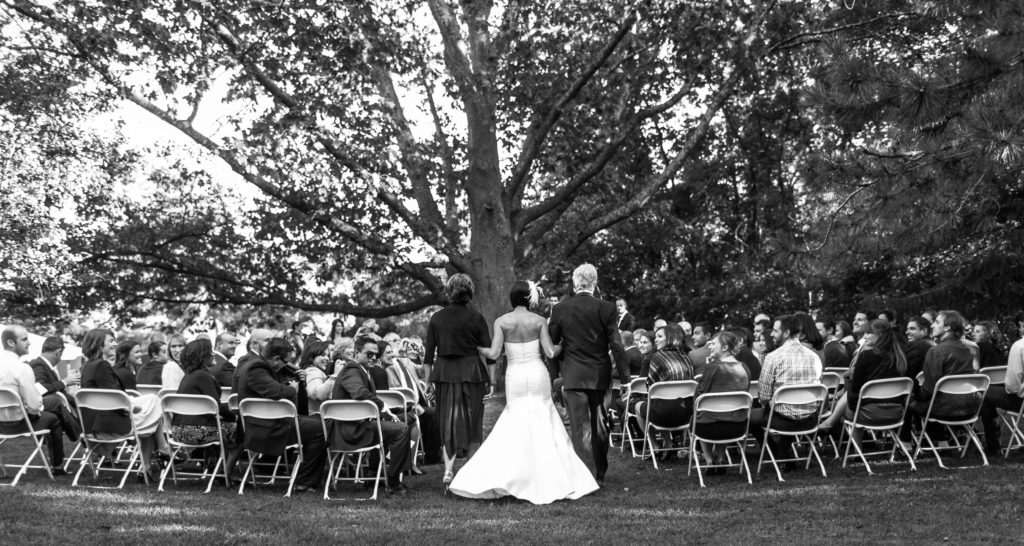
7. **The Bride Walks Down the Aisle with Her Father (and the Groom Enters Alone)**For eons, the image was etched in our minds: a blushing bride, arm-in-arm with her father, making that momentous walk down the aisle, while the groom just, well, appeared. This tradition, often seen as the father “giving away” his daughter, was a powerful symbol, but let’s be real, it doesn’t quite fit every family dynamic or modern couple’s vision anymore. It’s a sweet sentiment for some, but for others, it felt a little too prescriptive, leaving out important people or not reflecting the full journey of a couple.
But here’s the wonderful news: flexibility is now the name of the game when it comes to the aisle walk, and it’s a total breath of fresh air for everyone involved. Wedding planner José Rolón shares that “more and more, we’re seeing brides wanting to walk down the aisle with both parents, which is beautiful.” He even notes, “We’re making more room for a three-person aisle,” which sounds like a fantastic way to honor multiple loved ones! This opens up the possibility for a bride to be accompanied by whoever she chooses—whether it’s both parents, a step-parent, a sibling, or another cherished family member who has been a pillar of support.
And let’s not forget about the groom! Who says the bride gets all the fun entrances? Rolón also adds that “grooms are now wanting to feel included in this and want to walk down with their parents as well.” How cool is that? It’s all about celebrating everyone who has supported the couple on their journey, not just adhering to a centuries-old script. It beautifully acknowledges that a wedding is about two individuals and their families uniting, making every step down the aisle a meaningful tribute to love and support.
This shift is less about ditching dads (we love our dads!) and more about celebrating all family dynamics in a way that truly resonates with the couple. It means honoring the people who’ve supported you, in whatever configuration makes you happiest. Imagine the joy of seeing both parents beaming as they walk you down, or a groom proudly escorted by his own mom and dad. It just makes the whole moment feel more inclusive, more personal, and ultimately, more authentic to *your* unique story.
8. **The Couple Can’t See Each Other Before the Ceremony**This tradition is one of those classic wedding “rules” that dates back to some truly antiquated notions—think arranged marriages and fathers worrying the groom might bolt if he wasn’t immediately smitten. Yikes! Thankfully, we’ve evolved a bit since then, and modern couples are absolutely thrilled to retire this particular outdated rule. The idea that seeing your spouse-to-be before the ceremony is bad luck? Nah, we’re calling bluff on that one!
Enter the glorious “first look”—a modern wedding trend that has truly revolutionized the wedding day schedule. Experienced wedding and engagement photographer Sarah Bradshaw enthusiastically points out, “Most couples do a first look and portraits now to help ease the stress of the wedding day schedule.” This isn’t just about getting killer photos (though you absolutely will!), it’s about carving out a private, intimate moment for the couple before the whirlwind of the day truly begins.
Imagine getting to share a quiet, emotional moment with your partner, just the two of you, away from the prying eyes of guests, before the ceremony even starts. It’s a chance to calm nerves, truly connect, and bask in the excitement together. Plus, by getting many of the portraits done before the ceremony, you free up so much more time to actually *enjoy* your cocktail hour and reception with your loved ones. It’s a win-win, allowing for both breathtaking photos and more celebratory time.
So, for those who still harbor a tiny superstition, fear not! Seeing your partner before the ceremony isn’t actually bad luck. And if you’re feeling extra cautious, you can always sprinkle in some other lucky wedding traditions—like adding a small horseshoe to the bride’s outfit, rooted in Irish heritage, elsewhere in the ceremony. The first look is truly about prioritizing your peace of mind and shared joy, proving that some rules are definitely meant to be broken for a better, more relaxed wedding day.
Read more about: Kelsey Bateman, ‘Rock of Love’ Contestant, Dies at 39: Revisiting a Reality TV Journey and Its Enduring Echoes
9. **Guests Can’t Wear Black to the Wedding**For ages, wearing black to a wedding was seen as a major faux pas, a fashion no-no that might as well have come with a side-eye. The reasoning was simple: black is traditionally associated with mourning, and who wants to bring somber vibes to a joyous celebration, right? This unspoken rule kept many guests away from their favorite LBDs (little black dresses) or sharp black suits, fearing they’d be throwing “serious shade” on the happy couple, as etiquette expert Jodi RR Smith puts it.
But guess what? Times have changed, and so has our understanding of wedding attire! Lindsey Nickel, a wedding planner at Lovely Day Events, confidently states, “I think it’s appropriate to wear black to a wedding, especially if it’s a black tie wedding.” She adds, “Black is so chic and timeless.” And honestly, we couldn’t agree more! Black eveningwear for women is now considered incredibly stylish, with no hidden messages of doom and gloom at all. It’s a sophisticated choice that exudes elegance and class.
Of course, a little common sense goes a long way. While black is totally in, it’s still wise to consider the venue and season. A heavy, formal black gown at a casual summer winery wedding might feel a bit out of place, but a flowy black sundress? Absolutely divine! You can always brighten things up with colorful shoes, a bold statement necklace, or a vibrant clutch to add a pop of personality.
And for the fellas, a black suit remains an absolute classic for men, never going out of style. You can easily inject some color with a bright tie or pocket square, or even embrace a more relaxed vibe by simply leaving the jacket at home for a semi-formal affair. So go ahead, embrace the power of black – it’s sophisticated, chic, and definitely *not* bad luck anymore, unless the couple specifies otherwise (and, let’s be real, white is still generally off-limits unless explicitly requested!).
Read more about: You Won’t Believe How Gross These 14 Common Household Items Actually Are: Your Ultimate Germ Hotspot Guide!
10. **You Have to Have a Receiving Line**Picture this: you’ve just witnessed a beautiful ceremony, you’re ready to mingle, grab a cocktail, and celebrate, but first, you have to stand in a long, often awkward, line to formally greet the newlyweds and their parents. This “receiving line” was once a staple of wedding etiquette, especially at church weddings, ensuring every guest got a moment of face time with the happy couple. It was formal, expected, and, let’s be honest, sometimes a bit of a party-killer.
Good news, wedding warriors! Those formal receiving lines are quickly fading into the archives of outdated wedding rules. As Lindsey Nickel observes, “Receiving lines have disappeared over the years.” She notes that with more ceremonies happening outdoors and having a less formal vibe, couples are opting to skip this tradition altogether. Why? Because nobody wants to spend precious celebration time waiting in a queue when they could be enjoying appetizers, drinks, and chatting with other guests.
Wedding planner Lori Stephenson wisely calls the receiving line a “total party-killer,” emphasizing that guests’ time is better spent enjoying the festivities and mingling. Instead of the traditional lineup, many couples are now choosing to go straight into wedding party photos, which means more time to actually *enjoy* cocktail hour with their guests. This shift allows for more organic interactions throughout the event, leading to deeper, albeit fewer, connections, as Legacy Hill Farm points out.
Couples are finding more creative and relaxed ways to ensure they connect with everyone. Whether it’s circulating among tables during dinner or even going for an out-of-the-box option like a pre-ceremony “bartend” where the couple personally greets guests while pouring bubbly, the goal is genuine connection, not a formal procession. It’s about maximizing joy and minimizing waiting, which sounds like a perfect trade-off to us!
Read more about: Patrick Hemingway: A Life Beyond His Father’s Shadow, Stewardship, and Adventure Across Continents

11. **You Need to Do a Bouquet-and-Garter Toss**Oh, the bouquet and garter toss! These traditions were once considered the exciting highlights of a wedding reception, meant to predict who would be the next lucky person to tie the knot. But let’s be honest, they’ve often become “the dreaded event that sends all singles to the bathroom in a mass exodus,” as Amy McCord Jones humorously puts it. The rallying cries for “all the single ladies” and “eligible bachelors” can now feel incredibly awkward and unwanted by many modern couples and their guests.
Seriously, who wants their relationship status put on blast, or to “catfight for a bouquet” in front of everyone? And the garter toss, with its “cringe-worthy sight of a single man being encouraged to go ‘higher and higher’ when pushing the garter belt up the leg of a single woman, who is often a perfect stranger,” as etiquette expert Thomas P. Farley eloquently describes it, has definitely earned its retirement. These displays, while once thought amusing, are now largely seen as antiquated and uncomfortable for many.
Thankfully, brides are becoming much more sensitive to this and are finding incredibly thoughtful and meaningful alternatives. Instead of a competitive toss, some brides are choosing to present their bouquet to someone special, like the mother of the bride or, beautifully, to the couple who has been married the longest, honoring their enduring love. Lisa Mark and Rebecca Lozer, co-hosts of The Secret Life of Weddings podcast, even suggest a “dance for married couples” where the DJ gradually asks couples to sit down based on their years of marriage, culminating in the longest-married couple receiving the bouquet.
The garter toss, in particular, seems to be genuinely on the wane, which is a win for good taste and personal boundaries. As Jodi RR Smith points out, couples are “safely sav[ing] their lingerie for the privacy of the honeymoon.” So, whether you’re skipping them entirely or giving them a meaningful update, these once-iconic tosses are making way for celebrations that feel more comfortable, inclusive, and truly reflective of contemporary vibes.
12. **You Need to Give Wedding Favors**Remember those little bags of Jordan almonds, or perhaps a random trinket you weren’t quite sure what to do with? Wedding favors, once a ubiquitous part of guest departure, were intended as a small thank-you gift for attending. Couples would spend countless hours (and dollars!) picking out just the right item, hoping it would be a cherished memento. But often, the reality was a little less glamorous: favors ended up left behind, forgotten, or quietly tossed.
Logan Westom, a professional wedding photographer, hits the nail on the head, noting that favors “are a small, sometimes meaningless item for each guest.” He’s “seen a lot of people just make fun of them or not appreciate them to the level that the bride and groom probably spent thinking about them.” This blunt honesty reflects a growing sentiment among modern couples: why spend money on something that might not be valued, when that budget could go towards something much more impactful?
In 2025, couples are definitely reconsidering this tradition. Instead of scattering small, forgettable trinkets, they’re creatively reallocating their budget towards experiences that guests will truly remember and appreciate. We’re talking about upgrading the food experience with a late-night snack bar (hello, pizza after dancing!), an interactive photo booth for hilarious memories, or even more spectacular entertainment that keeps the dance floor packed all night long.
Some couples are even using that favor money for a cause close to their hearts. Westom shares a beautiful example: he and his wife put their favor budget into a donation to a charity important to them, with a small note for guests at each table. It’s a thoughtful, impactful way to say thank you while supporting something meaningful. This shift isn’t about being stingy; it’s about intentional spending and ensuring every element of your wedding genuinely enhances the guest experience or reflects your values, making a bigger splash than a forgotten keepsake ever could!
Read more about: Unlock Your Car’s Security: The 15 Most Common Items Thieves Target (And Why You Should Never Leave #5 Behind)
And there you have it, our deep dive into the wedding traditions that are officially getting a makeover, or being left behind entirely, in 2025! From the aisle walk to the grand finale of favors, modern couples are fearlessly shaking things up, prioritizing authenticity, personalization, and genuine connection over outdated expectations. It’s a beautiful evolution, allowing each celebration to be a true testament to the unique love story it honors. So, if you’re planning your big day, remember: your wedding, your rules! Embrace the freedom, get creative, and craft a celebration that feels perfectly, joyfully, and authentically *you*. We’re here for it, and so are your guests!

